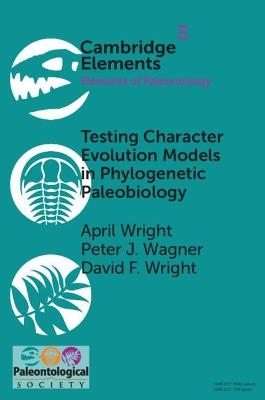
Testing Character Evolution Models in Phylogenetic Paleobiology
A case study with Cambrian echinoderms
Seiten
2021
Cambridge University Press (Verlag)
978-1-009-04884-2 (ISBN)
Cambridge University Press (Verlag)
978-1-009-04884-2 (ISBN)
This Element provides a hypothesis-driven look at testing models for diversification in Cambrian echinoderms, fitting and using a joint tree and diversification model to estimate a dated phylogeny of the Cincta (Echinodermata).
Macroevolutionary inference has historically been treated as a two-step process, involving the inference of a tree, and then inference of a macroevolutionary model using that tree. Newer models blend the two steps. These methods make more complete use of fossils than the previous generation of Bayesian phylogenetic models. They also involve many more parameters than prior models, including parameters about which empiricists may have little intuition. In this Element, we set forth a framework for fitting complex, hierarchical models. The authors ultimately fit and use a joint tree and diversification model to estimate a dated phylogeny of the Cincta (Echinodermata), a morphologically distinct group of Cambrian echinoderms that lack the fivefold radial symmetry characteristic of extant members of the phylum. Although the phylogeny of cinctans remains poorly supported in places, this Element shows how models of character change and diversification contribute to understanding patterns of phylogenetic relatedness and testing macroevolutionary hypotheses.
Macroevolutionary inference has historically been treated as a two-step process, involving the inference of a tree, and then inference of a macroevolutionary model using that tree. Newer models blend the two steps. These methods make more complete use of fossils than the previous generation of Bayesian phylogenetic models. They also involve many more parameters than prior models, including parameters about which empiricists may have little intuition. In this Element, we set forth a framework for fitting complex, hierarchical models. The authors ultimately fit and use a joint tree and diversification model to estimate a dated phylogeny of the Cincta (Echinodermata), a morphologically distinct group of Cambrian echinoderms that lack the fivefold radial symmetry characteristic of extant members of the phylum. Although the phylogeny of cinctans remains poorly supported in places, this Element shows how models of character change and diversification contribute to understanding patterns of phylogenetic relatedness and testing macroevolutionary hypotheses.
1. Introduction; 2. Taxonomic Background and Data; 3. Taxonomic Background and Data; 4. Methods; 5. Discussion; 6. Conclusion; Appendix; References.
| Erscheinungsdatum | 16.08.2021 |
|---|---|
| Reihe/Serie | Elements of Paleontology |
| Zusatzinfo | Worked examples or Exercises |
| Verlagsort | Cambridge |
| Sprache | englisch |
| Maße | 151 x 229 mm |
| Gewicht | 94 g |
| Themenwelt | Naturwissenschaften ► Biologie ► Evolution |
| Naturwissenschaften ► Geowissenschaften ► Mineralogie / Paläontologie | |
| ISBN-10 | 1-009-04884-8 / 1009048848 |
| ISBN-13 | 978-1-009-04884-2 / 9781009048842 |
| Zustand | Neuware |
| Haben Sie eine Frage zum Produkt? |
Mehr entdecken
aus dem Bereich
aus dem Bereich
Wie die Vernichtung der Arten unser Überleben bedroht - Der …
Buch | Softcover (2023)
Penguin (Verlag)
15,00 €


